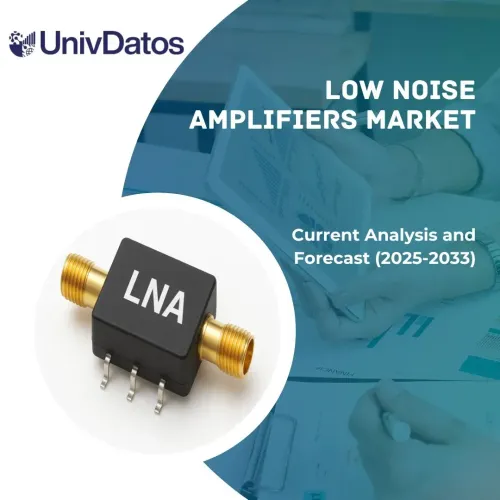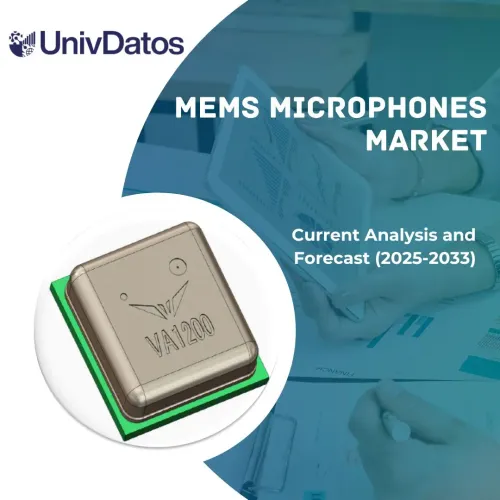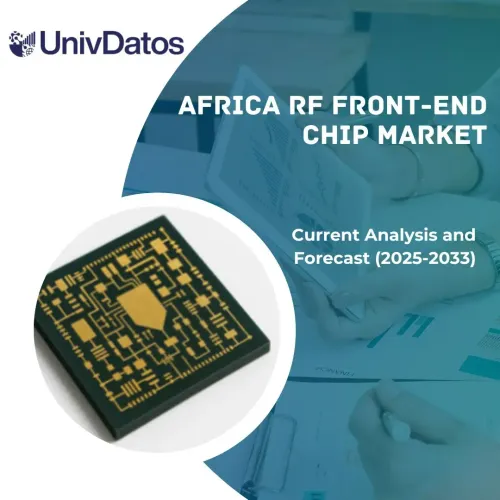- Trang chủ
- Về chúng tôi
- Ngành
- Dịch vụ
- Đọc
- Liên hệ với chúng tôi
Thị trường Quang khắc Cực tím (EUV): Phân tích Hiện tại và Dự báo (2024-2032)
Nhấn mạnh vào Thành phần (Nguồn sáng, Quang học, Mặt nạ và các loại khác); Người dùng cuối (Nhà sản xuất thiết bị tích hợp và Xưởng đúc); Khu vực/Quốc gia.
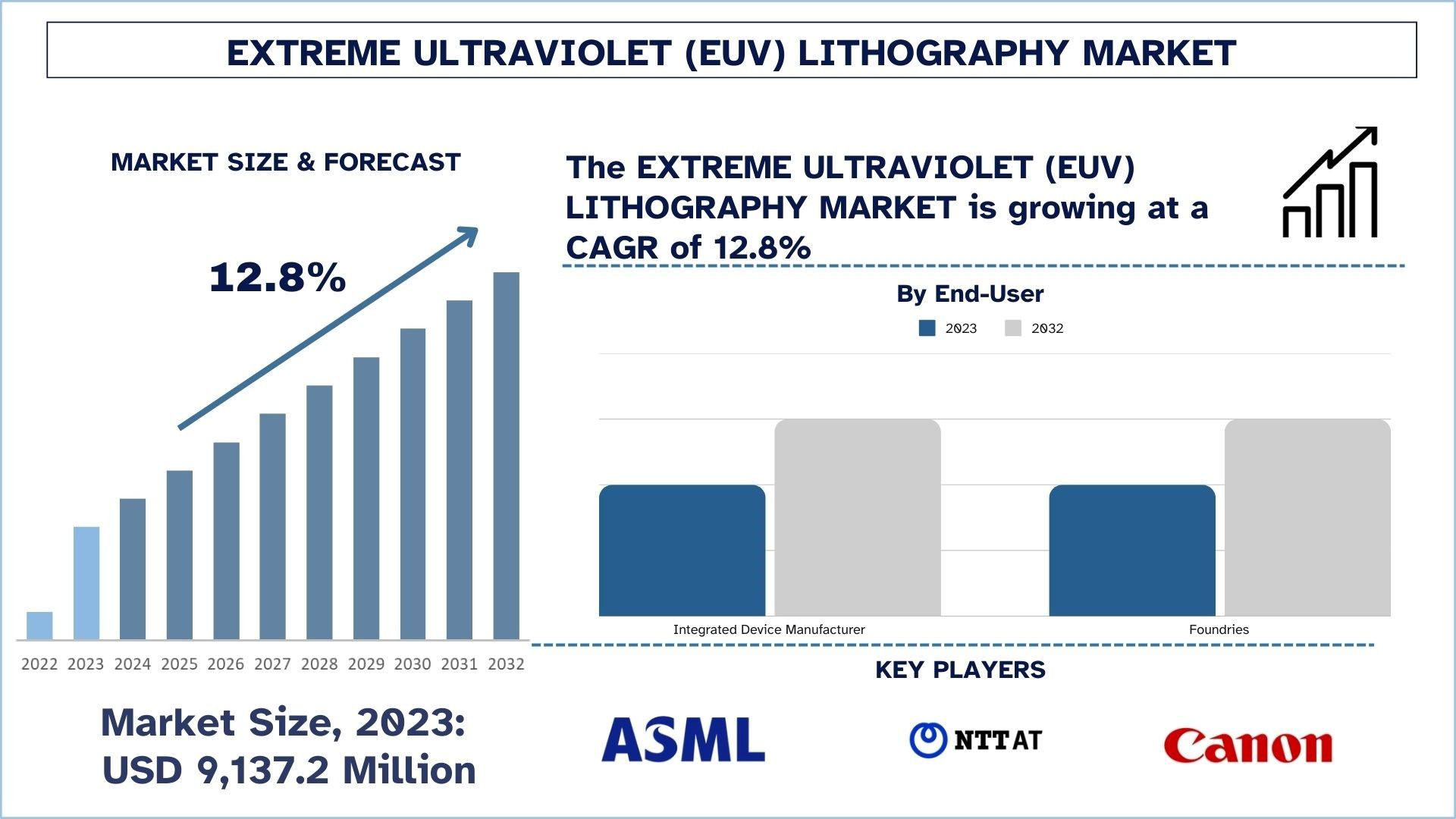
Kích thước & Dự báo Thị trường Khắc in Cực tím
Thị trường Khắc in Cực tím được định giá 9.137,2 triệu USD vào năm 2023 và dự kiến sẽ tăng trưởng với tốc độ CAGR mạnh mẽ khoảng 12,8% trong giai đoạn dự báo (2024-2032) do sự hỗ trợ của chính phủ, những tiến bộ công nghệ và nhu cầu ngày càng tăng đối với các chip nhỏ hơn, hiệu suất cao hơn.
Phân tích Thị trường Khắc in Cực tím
Thị trường khắc in EUV là một phân khúc thị trường thứ cấp của ngành công nghiệp bán dẫn, cần thiết để sản xuất chip ở các nút tiên tiến như 5nm, 3nm trở lên. Khắc in EUV, với bước sóng 13,5 nm, được sử dụng để tạo hoa văn độ phân giải cao trên tấm bán dẫn và cần thiết cho sự phát triển của các chip nhỏ hơn, nhanh hơn, hiệu quả hơn. Đây là chìa khóa để khai phá những đổi mới trong AI, 5G, IoT, xe tự hành và điện tử tiêu dùng. Chủ yếu được thúc đẩy bởi nhu cầu thị trường ngày càng tăng đối với các chip hiệu suất cao, khoản đầu tư đáng kể của các ông lớn trong ngành như TSMC, Samsung và Intel, và những tiến bộ nhanh chóng trong công nghệ chế tạo chất bán dẫn. Việc áp dụng khắc in EUV trên toàn thế giới cũng được hỗ trợ bởi tài trợ của chính phủ và việc thiết lập chuỗi cung ứng chất bán dẫn bằng các sáng kiến của chính phủ.
Mỹ, Hàn Quốc và Đài Loan là những quốc gia phát triển nhanh nhất trong thị trường khắc in EUV, được thúc đẩy bởi hệ sinh thái bán dẫn mạnh mẽ và các khoản đầu tư lớn vào các công nghệ sản xuất tiên tiến nhất. Với các khoản đầu tư lớn từ Đạo luật CHIPS và các nhà máy sản xuất mới của Intel và TSMC, Hoa Kỳ đang phát triển nhanh chóng. Samsung và SK Hynix của Hàn Quốc đang đặt cược vào việc mở rộng năng lực sản xuất để đáp ứng nhu cầu toàn cầu về chip tiên tiến. TSMC, có trụ sở chính tại Đài Loan, vẫn dẫn đầu thế giới về sản xuất chip vì họ có những khả năng tiên tiến nhất và năng lực sản xuất số lượng lớn. Ngoài ra, Trung Quốc ngày càng đóng vai trò tích cực hơn, với các khoản đầu tư lớn của chính phủ để giảm sự phụ thuộc vào công nghệ bán dẫn nước ngoài và đạt được sự tự chủ về công nghệ. Tương lai của thị trường khắc in EUV đang được thúc đẩy bởi các quốc gia này, trong cả việc thúc đẩy và mở rộng quy mô đổi mới.
Xu hướng Thị trường Khắc in Cực tím
Phần này thảo luận về các xu hướng thị trường chính đang ảnh hưởng đến các phân khúc khác nhau của thị trường Khắc in Cực tím theo xác định của nhóm chuyên gia nghiên cứu của chúng tôi.
Nhu cầu về các Nút nhỏ hơn
Động lực chính của thị trường Khắc in EUV là yêu cầu về các nút bán dẫn nhỏ hơn. Với công nghệ tiên tiến trong các lĩnh vực như AI, 5G và IoT, chúng ta đang thấy mục đích sử dụng nhiều hơn các chip nhỏ hơn, mạnh mẽ hơn và tiết kiệm năng lượng hơn. Để biến những công nghệ tiên tiến này thành hiện thực, cần phải có các chip có mật độ bóng bán dẫn cao hơn để hỗ trợ tốc độ xử lý nhanh hơn và mức tiêu thụ điện năng ít hơn. Để tiếp tục vượt xa các nút 5nm, 3nm và 2nm, các nhà sản xuất chất bán dẫn ngày càng phải dựa vào khắc in EUV để cho phép tạo hoa văn rất chính xác cần thiết cho các kích thước tính năng nhỏ như vậy. Điều này là để giữ cho thị trường EUV phát triển vì sự thúc giục đối với các nút nhỏ hơn này.
Đầu tư vào R&D và Sản xuất
Các công ty bán dẫn đầu tư lớn vào nghiên cứu, phát triển và sản xuất, và việc áp dụng khắc in EUV đang tăng tốc. Nhưng Intel, TSMC và Samsung đang chi hàng tỷ đô la vào nghiên cứu và phát triển khoa học silicon để luôn dẫn đầu thế giới cạnh tranh về sản xuất chip. Trọng tâm của các khoản đầu tư này là hiệu quả sản xuất, phát triển các kiến trúc chip mới và tạo ra các công nghệ bán dẫn tiên tiến. Do đó, khắc in EUV là điều cần thiết trong việc cho phép các chip thế hệ tiếp theo bằng cách mở rộng lợi thế dẫn đầu của công nghệ in thạch bản hiện tại vượt ra ngoài những gì hiện có thể.
Chip Hiệu suất cao
Một động lực chính khác của thị trường EUV là nhu cầu ngày càng tăng đối với chip hiệu suất cao. Các chip mang lại tốc độ cao hơn, dung lượng lưu trữ lớn hơn và hiệu suất tiết kiệm năng lượng hơn đang nhanh chóng trở nên có nhu cầu trong các ngành công nghiệp như ô tô, điện tử tiêu dùng, trung tâm dữ liệu và điện toán đám mây. Những yêu cầu này không thể đáp ứng được nếu không có các quy trình bán dẫn tiên tiến, chẳng hạn như khắc in EUV, cho phép sản xuất các chip có bóng bán dẫn nhỏ hơn, được đóng gói ngày càng dày đặc, chạy nhanh hơn và tiêu thụ ít điện năng hơn. Đó là vì sự phụ thuộc vào các chip này tiếp tục tăng lên trong các ứng dụng, nhu cầu về công nghệ EUV tăng lên đồng thời.
Hỗ trợ của Chính phủ
Một lần nữa, việc áp dụng khắc in EUV phụ thuộc nhiều vào các sáng kiến và tài trợ của chính phủ. Điều này đặc biệt đúng với nhiều chính phủ trên khắp thế giới, bao gồm cả những chính phủ từ các khu vực như Hoa Kỳ, Châu Âu và Châu Á, những khu vực đã bắt đầu thực hiện các sáng kiến để tăng cường sản xuất chất bán dẫn trong nước và giảm sự phụ thuộc của họ vào các công nghệ nước ngoài. Ví dụ, Đạo luật CHIPS của Hoa Kỳ chi tiền để khuyến khích sản xuất chip trong nước, thúc đẩy việc áp dụng các công nghệ tiên tiến như EUV. Tương tự, các quốc gia như Hàn Quốc và Nhật Bản đã đầu tư rất nhiều vào việc phát triển ngành công nghiệp bán dẫn của họ. Điều này thúc đẩy một môi trường trong đó công nghệ EUV phát triển mạnh mẽ và phát triển và quan trọng hơn, điều này mang lại sự tăng trưởng thị trường lâu dài.
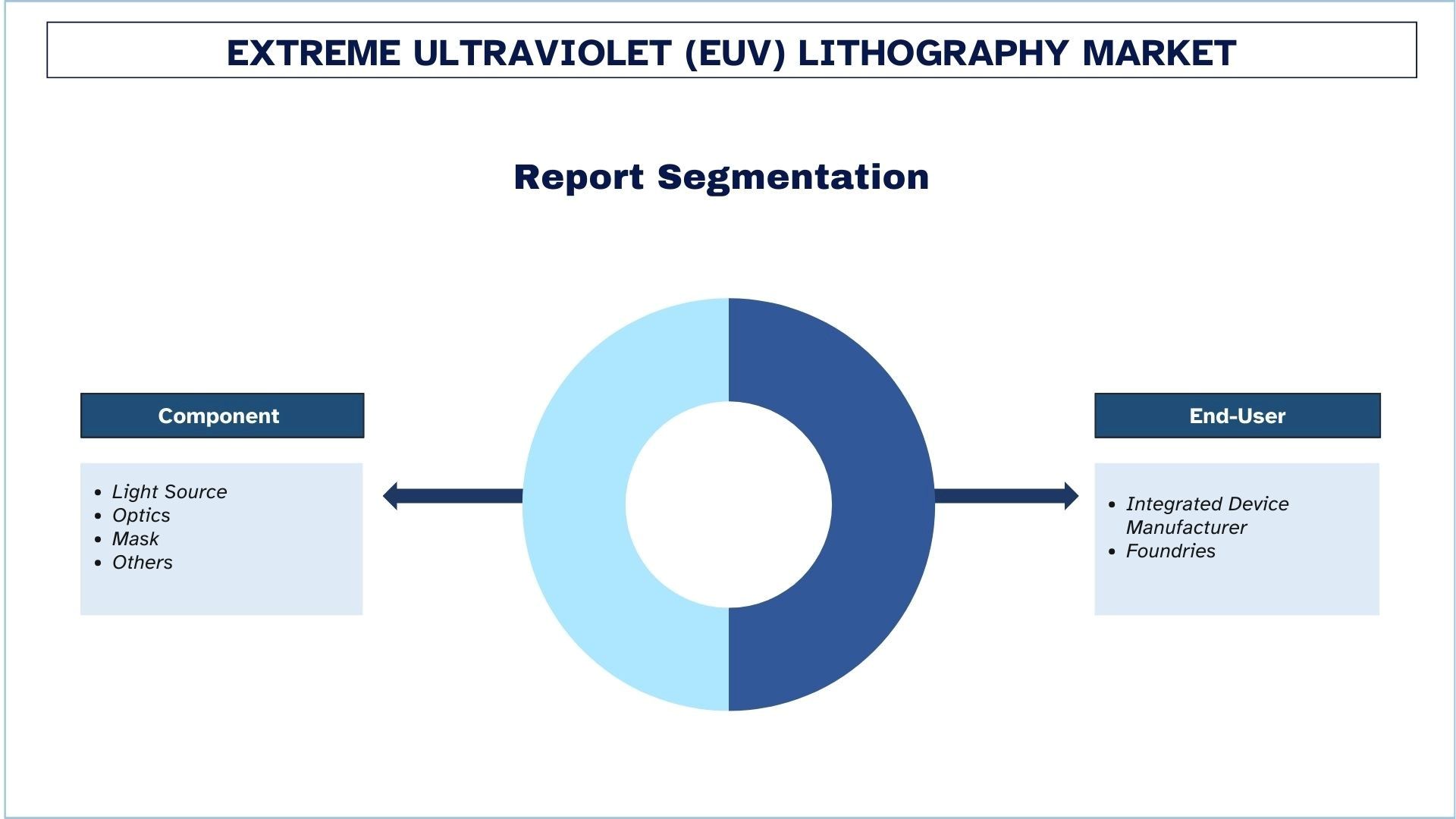
APAC dự kiến sẽ tăng trưởng với CAGR đáng kể trong giai đoạn dự báo
Khu vực Châu Á Thái Bình Dương (APAC) đang đi đầu trong thị trường khắc in Cực tím (EUV), thu hút các nhà sản xuất chất bán dẫn lớn như Taiwan Semiconductor Manufacturing Company (TSMC), Samsung Electronics và SK Hynix. Các công ty này đang dẫn đầu trong việc áp dụng EUV để sản xuất các chip tiên tiến như các nút 5nm và 3nm tại trung tâm sản xuất chất bán dẫn toàn cầu ở APAC. Tại các quốc gia như Đài Loan, Hàn Quốc, Nhật Bản và Trung Quốc, các sáng kiến của chính phủ đang tiếp tục tăng cường việc áp dụng EUV, với các khoản đầu tư lớn, tài trợ và hỗ trợ R&D cho R&D chất bán dẫn trong nước. APAC tiếp tục là một thị trường quan trọng đối với khắc in EUV do nhu cầu ngày càng tăng đối với các chip hiệu suất cao, tiết kiệm năng lượng trên các ngành công nghiệp như 5G, AI và ô tô, và để thúc đẩy sự đổi mới và năng lực sản xuất giúp xác định bối cảnh bán dẫn toàn cầu.
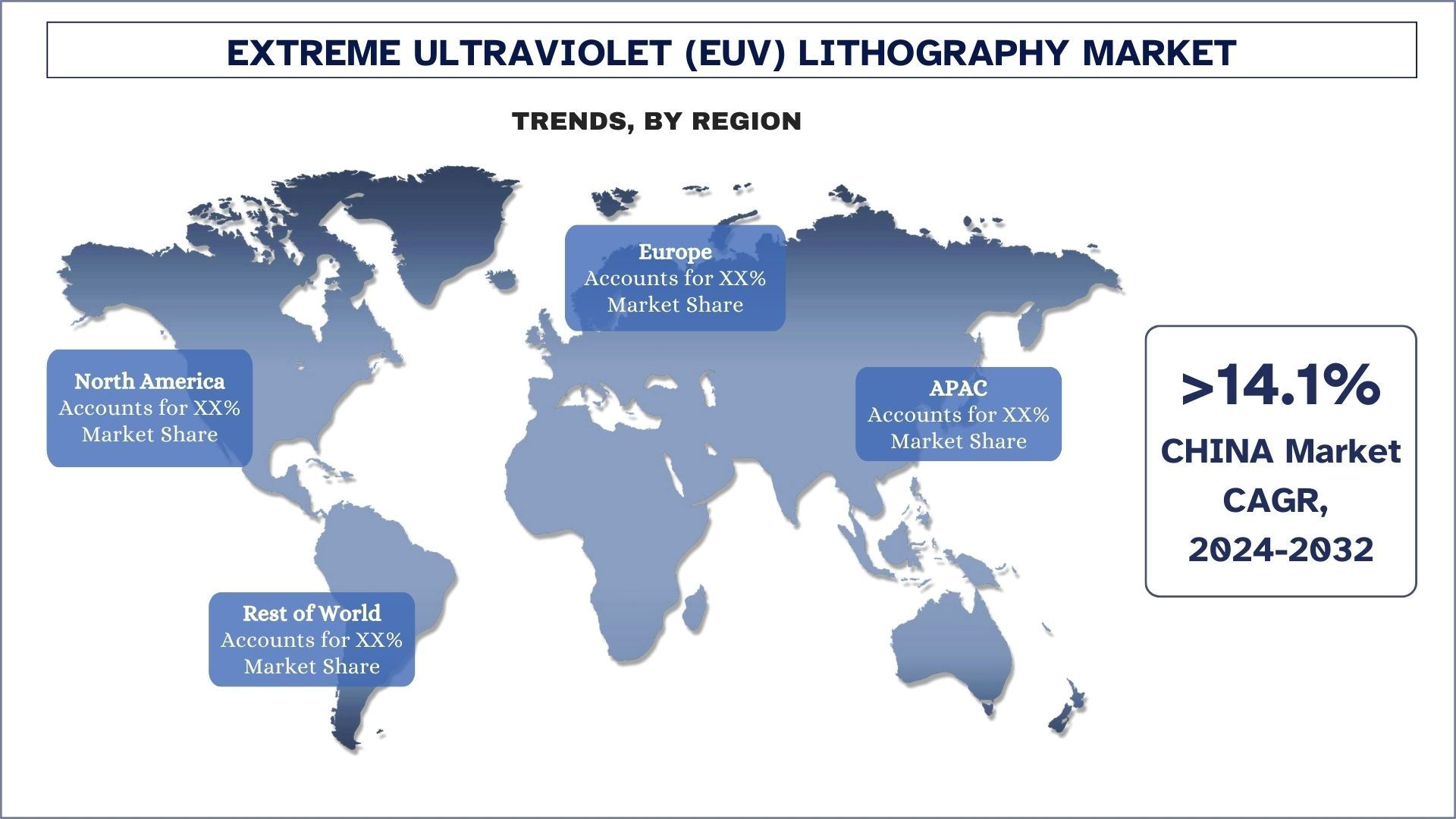
Tổng quan về Ngành Khắc in Cực tím
Thị trường Khắc in Cực tím có tính cạnh tranh và phân mảnh, với sự hiện diện của một số người chơi thị trường toàn cầu và quốc tế. Các công ty chủ chốt đang áp dụng các chiến lược tăng trưởng khác nhau để tăng cường sự hiện diện trên thị trường của họ, chẳng hạn như quan hệ đối tác, thỏa thuận, hợp tác, ra mắt sản phẩm mới, mở rộng địa lý và sáp nhập và mua lại. Một số công ty lớn hoạt động trên thị trường bao gồm ASML Holding NV, NTT Advanced Technology Corporation, Canon Inc., Nikon Corporation, Intel Corporation, Taiwan Semiconductor Manufacturing Company Limited, Samsung Electronics Co. Ltd., Toppan Photomasks Inc., ZEISS Group và Ushio, Inc.
Tin tức Thị trường Khắc in Cực tím
Vào tháng 5 năm 2024, Intel đã đảm bảo toàn bộ số lượng thiết bị sản xuất chip High Numerical Aperture NA Extreme Ultraviolet (High NA EUV) của ASML dự kiến sẽ được sản xuất trong năm nay. Theo một báo cáo trên TheElec, ASML có trụ sở tại Hà Lan có khả năng sản xuất khoảng năm hoặc sáu đơn vị thiết bị high-NA EUV mỗi năm, với Intel đã đảm bảo tất cả năm đơn vị dự kiến sẽ được sản xuất vào năm 2024. Mỗi đơn vị có giá khoảng 370 triệu đô la. Báo cáo nói thêm rằng Samsung và SK Hynix sẽ phải đợi đến nửa cuối năm 2025 để có được thiết bị từ ASML.
Phạm vi Báo cáo Thị trường Khắc in Cực tím
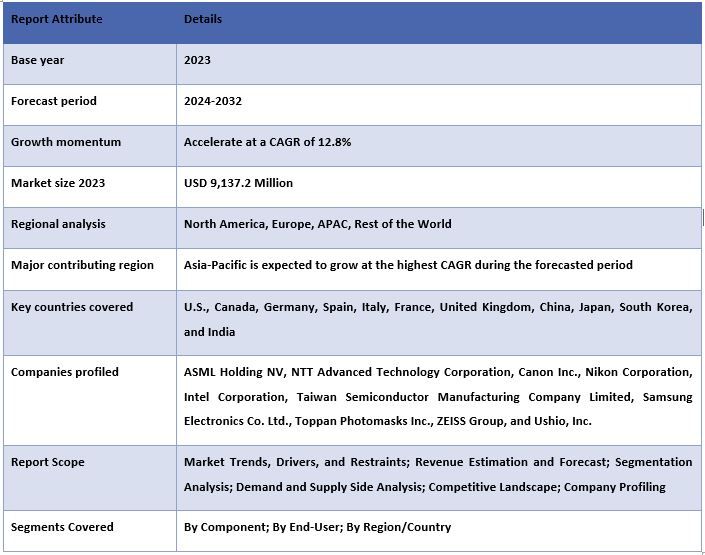
Lý do nên mua báo cáo này:
Nghiên cứu bao gồm phân tích kích thước thị trường và dự báo được xác thực bởi các chuyên gia ngành chủ chốt đã được xác thực.
Báo cáo trình bày đánh giá nhanh về hiệu suất tổng thể của ngành trong nháy mắt.
Báo cáo bao gồm phân tích chuyên sâu về các đối thủ cạnh tranh nổi bật trong ngành với trọng tâm chính vào tình hình tài chính kinh doanh quan trọng, danh mục sản phẩm, chiến lược mở rộng và các phát triển gần đây.
Kiểm tra chi tiết các động lực, hạn chế, xu hướng chính và cơ hội thịnh hành trong ngành.
Nghiên cứu bao quát toàn diện thị trường trên các phân khúc khác nhau.
Phân tích sâu ở cấp độ khu vực của ngành.
Tùy chọn Tùy chỉnh:
Thị trường Khắc in Cực tím toàn cầu có thể được tùy chỉnh thêm theo yêu cầu hoặc bất kỳ phân khúc thị trường nào khác. Bên cạnh đó, UMI hiểu rằng bạn có thể có nhu cầu kinh doanh riêng, do đó, vui lòng liên hệ với chúng tôi để nhận được một báo cáo hoàn toàn phù hợp với yêu cầu của bạn.
Mục lục
Phương Pháp Nghiên Cứu Phân Tích Thị Trường Khắc Tia Cực Tím (EUV) (2024-2032)
Phân tích thị trường lịch sử, ước tính thị trường hiện tại và dự báo thị trường tương lai của công nghệ khắc tia cực tím toàn cầu là ba bước chính được thực hiện để tạo và khám phá việc áp dụng công nghệ khắc tia cực tím ở các khu vực lớn trên toàn cầu. Nghiên cứu thứ cấp chuyên sâu đã được tiến hành để thu thập số liệu thị trường lịch sử và ước tính quy mô thị trường hiện tại. Thứ hai, nhiều phát hiện và giả định đã được xem xét để xác thực những hiểu biết này. Hơn nữa, các cuộc phỏng vấn sơ cấp chuyên sâu cũng đã được thực hiện với các chuyên gia trong ngành trên toàn chuỗi giá trị của thị trường khắc tia cực tím toàn cầu. Sau khi giả định và xác thực số liệu thị trường thông qua các cuộc phỏng vấn sơ cấp, chúng tôi đã sử dụng phương pháp tiếp cận từ trên xuống/từ dưới lên để dự báo quy mô thị trường hoàn chỉnh. Sau đó, các phương pháp phân tích chi tiết thị trường và phân tích tam giác dữ liệu đã được áp dụng để ước tính và phân tích quy mô thị trường của các phân khúc và phân khúc con của ngành. Phương pháp luận chi tiết được giải thích dưới đây:
Phân Tích Quy Mô Thị Trường Lịch Sử
Bước 1: Nghiên Cứu Chuyên Sâu Các Nguồn Thứ Cấp:
Một nghiên cứu thứ cấp chi tiết đã được tiến hành để thu thập quy mô thị trường lịch sử của công nghệ khắc tia cực tím thông qua các nguồn nội bộ của công ty như báo cáo thường niên & báo cáo tài chính, thuyết trình hiệu quả hoạt động, thông cáo báo chí, v.v., và các nguồn bên ngoài bao gồm tạp chí, tin tức & bài viết, ấn phẩm của chính phủ, ấn phẩm của đối thủ cạnh tranh, báo cáo ngành, cơ sở dữ liệu của bên thứ ba và các ấn phẩm đáng tin cậy khác.
Bước 2: Phân Khúc Thị Trường:
Sau khi thu thập quy mô thị trường lịch sử của công nghệ khắc tia cực tím, chúng tôi đã tiến hành phân tích thứ cấp chi tiết để thu thập thông tin chi tiết về thị trường lịch sử và chia sẻ cho các phân khúc và phân khúc con khác nhau cho các khu vực lớn. Các phân khúc chính được bao gồm trong báo cáo, chẳng hạn như Thành phần và Người dùng cuối. Phân tích cấp quốc gia sâu hơn đã được thực hiện để đánh giá việc áp dụng tổng thể các mô hình thử nghiệm ở khu vực đó.
Bước 3: Phân Tích Yếu Tố:
Sau khi có được quy mô thị trường lịch sử của các phân khúc và phân khúc con khác nhau, chúng tôi đã tiến hành phân tích yếu tố chi tiết để ước tính quy mô thị trường hiện tại của công nghệ khắc tia cực tím. Hơn nữa, chúng tôi đã tiến hành phân tích yếu tố bằng cách sử dụng các biến phụ thuộc và độc lập như Thành phần và Người dùng cuối của thị trường công nghệ khắc tia cực tím. Một phân tích kỹ lưỡng đã được thực hiện về các kịch bản cung và cầu, có tính đến các quan hệ đối tác hàng đầu, sáp nhập và mua lại, mở rộng kinh doanh và ra mắt sản phẩm trong lĩnh vực công nghệ khắc tia cực tím trên toàn cầu.
Ước Tính & Dự Báo Quy Mô Thị Trường Hiện Tại
Định cỡ Thị Trường Hiện Tại: Dựa trên những hiểu biết sâu sắc có thể hành động từ 3 bước trên, chúng tôi đã đi đến quy mô thị trường hiện tại, những người chơi chính trong thị trường khắc tia cực tím toàn cầu và thị phần của các phân khúc. Tất cả các tỷ lệ phần trăm, chia nhỏ và phân tích chi tiết thị trường cần thiết đã được xác định bằng cách sử dụng phương pháp thứ cấp được đề cập ở trên và đã được xác minh thông qua các cuộc phỏng vấn sơ cấp.
Ước Tính & Dự Báo: Để ước tính và dự báo thị trường, trọng số đã được gán cho các yếu tố khác nhau bao gồm các động lực & xu hướng, hạn chế và cơ hội có sẵn cho các bên liên quan. Sau khi phân tích các yếu tố này, các kỹ thuật dự báo có liên quan, tức là phương pháp tiếp cận từ trên xuống/từ dưới lên đã được áp dụng để đưa ra dự báo thị trường cho năm 2032 cho các phân khúc và phân khúc con khác nhau trên các thị trường lớn trên toàn cầu. Phương pháp nghiên cứu được áp dụng để ước tính quy mô thị trường bao gồm:
Quy mô thị trường của ngành, về doanh thu (USD) và tỷ lệ chấp nhận công nghệ khắc tia cực tím trên các thị trường lớn trong nước
Tất cả các tỷ lệ phần trăm, chia nhỏ và phân tích chi tiết của các phân khúc và phân khúc con thị trường
Những người chơi chính trong thị trường khắc tia cực tím toàn cầu về các sản phẩm được cung cấp. Ngoài ra, các chiến lược tăng trưởng được những người chơi này áp dụng để cạnh tranh trong thị trường đang phát triển nhanh chóng
Xác Thực Quy Mô và Thị Phần Thị Trường
Nghiên Cứu Sơ Cấp: Các cuộc phỏng vấn chuyên sâu đã được thực hiện với các Nhà Lãnh Đạo Ý Kiến Chủ Chốt (KOL) bao gồm các Giám Đốc Điều Hành Cấp Cao (CXO/VP, Trưởng Phòng Kinh Doanh, Trưởng Phòng Marketing, Trưởng Phòng Vận Hành, Trưởng Khu Vực, Trưởng Đại Diện Quốc Gia, v.v.) trên khắp các khu vực lớn. Các phát hiện nghiên cứu sơ cấp sau đó được tóm tắt và phân tích thống kê đã được thực hiện để chứng minh giả thuyết đã nêu. Thông tin đầu vào từ nghiên cứu sơ cấp đã được hợp nhất với các phát hiện thứ cấp, do đó biến thông tin thành những hiểu biết sâu sắc có thể hành động.
Phân Chia Người Tham Gia Sơ Cấp ở Các Khu Vực Khác Nhau
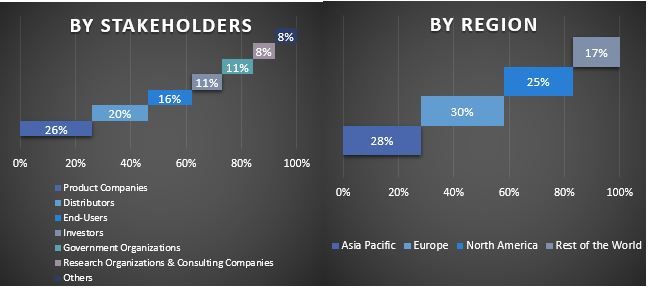
Kỹ Thuật Thị Trường
Kỹ thuật phân tích tam giác dữ liệu đã được sử dụng để hoàn thành việc ước tính thị trường tổng thể và để đưa ra các số liệu thống kê chính xác cho từng phân khúc và phân khúc con của thị trường khắc tia cực tím toàn cầu. Dữ liệu đã được chia thành nhiều phân khúc & phân khúc con sau khi nghiên cứu các thông số và xu hướng khác nhau trong các lĩnh vực Thành phần và Người dùng cuối trong thị trường khắc tia cực tím toàn cầu.
Mục tiêu chính của Nghiên cứu Thị trường Khắc Tia Cực Tím Toàn Cầu
Các xu hướng thị trường hiện tại & tương lai của thị trường khắc tia cực tím toàn cầu đã được xác định chính xác trong nghiên cứu. Các nhà đầu tư có thể thu được những hiểu biết sâu sắc về chiến lược để làm cơ sở cho quyết định đầu tư của họ dựa trên phân tích định tính và định lượng được thực hiện trong nghiên cứu. Các xu hướng thị trường hiện tại và tương lai đã xác định mức độ hấp dẫn tổng thể của thị trường ở cấp khu vực, cung cấp một nền tảng cho người tham gia công nghiệp khai thác thị trường chưa được khai thác để hưởng lợi từ lợi thế của người đi đầu. Các mục tiêu định lượng khác của các nghiên cứu bao gồm:
Phân tích quy mô thị trường hiện tại và dự báo của ngành khắc tia cực tím về giá trị (USD). Ngoài ra, phân tích quy mô thị trường hiện tại và dự báo của các phân khúc và phân khúc con khác nhau
Các phân khúc trong nghiên cứu bao gồm các lĩnh vực Thành phần và Người dùng cuối
Xác định và phân tích khuôn khổ pháp lý cho ngành công nghiệp khắc tia cực tím
Phân tích chuỗi giá trị liên quan đến sự hiện diện của nhiều trung gian, cùng với việc phân tích hành vi của khách hàng và đối thủ cạnh tranh trong ngành
Phân tích quy mô thị trường hiện tại và dự báo của thị trường khắc tia cực tím cho khu vực lớn
Các quốc gia lớn của các khu vực được nghiên cứu trong báo cáo bao gồm Châu Á Thái Bình Dương, Châu Âu, Bắc Mỹ và Phần còn lại của Thế giới
Hồ sơ công ty của thị trường khắc tia cực tím và các chiến lược tăng trưởng được những người chơi trên thị trường áp dụng để duy trì trong thị trường đang phát triển nhanh chóng
Phân tích chuyên sâu cấp khu vực của ngành
Câu hỏi thường gặp Câu hỏi thường gặp
Câu hỏi 1: Kích thước thị trường hiện tại và tiềm năng tăng trưởng của thị trường Khắc tia cực tím (Extreme Ultraviolet Lithography) là gì?
Thị trường in thạch bản cực tím (Extreme Ultraviolet Lithography Market) được định giá 9.137,2 triệu đô la Mỹ vào năm 2023 và dự kiến sẽ tăng trưởng với tốc độ CAGR mạnh mẽ khoảng 12,8% trong giai đoạn dự báo (2024-2032).
Q2: Đâu là những yếu tố thúc đẩy sự tăng trưởng của thị trường Quang khắc cực tím (Extreme Ultraviolet Lithography)?
Sự tăng trưởng của thị trường In thạch bản tia cực tím xa (Extreme Ultraviolet Lithography) được thúc đẩy bởi nhu cầu ngày càng tăng đối với các chip nhỏ hơn, hiệu suất cao, những tiến bộ trong công nghệ bán dẫn và các khoản đầu tư đáng kể vào R&D và sản xuất.
Q3: Phân khúc nào chiếm thị phần lớn nhất trong thị trường in thạch bản cực tím (Extreme Ultraviolet Lithography) theo Thành phần?
Phân khúc Nguồn Sáng chiếm thị phần lớn nhất trong thị trường Khắc bản cực tím (Extreme Ultraviolet Lithography) theo Thành phần.
Câu 4: Các công nghệ và xu hướng mới nổi trong thị trường Quang khắc cực tím (EUV) là gì?
Các công nghệ và xu hướng mới nổi trong thị trường in thạch bản EUV bao gồm phát triển các nguồn sáng EUV công suất cao, cải tiến trong công nghệ mặt nạ và tích hợp AI và máy học để tăng cường kiểm soát quy trình và hiệu quả.
Q5: Khu vực nào sẽ chiếm ưu thế trên thị trường Quang khắc cực tím?
Khu vực Châu Á - Thái Bình Dương dự kiến sẽ thống trị thị trường trong giai đoạn dự báo.
Liên quan Báo cáo
Khách hàng đã mua mặt hàng này cũng đã mua



